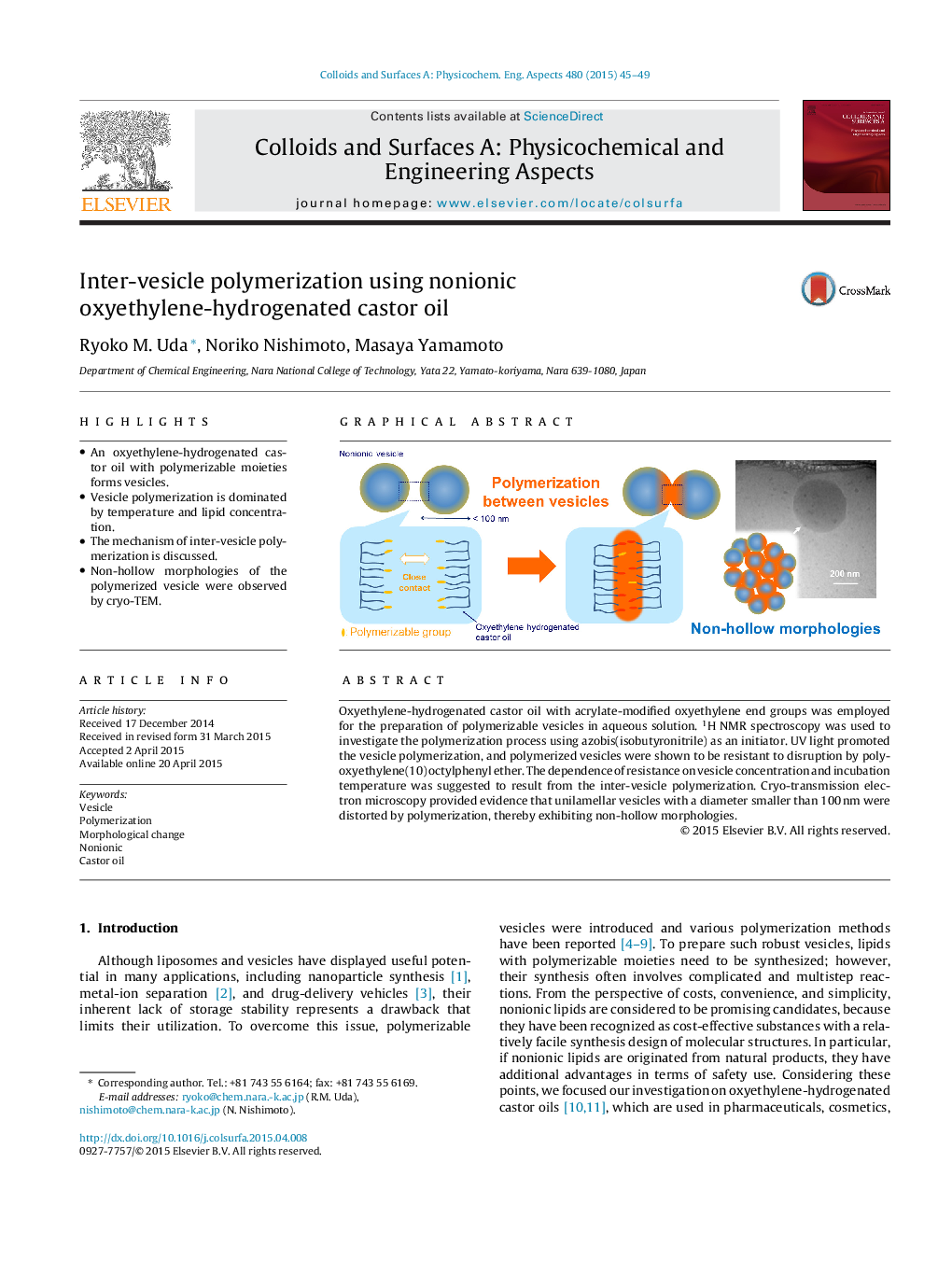| Article ID | Journal | Published Year | Pages | File Type |
|---|---|---|---|---|
| 592133 | Colloids and Surfaces A: Physicochemical and Engineering Aspects | 2015 | 5 Pages |
•An oxyethylene-hydrogenated castor oil with polymerizable moieties forms vesicles.•Vesicle polymerization is dominated by temperature and lipid concentration.•The mechanism of inter-vesicle polymerization is discussed.•Non-hollow morphologies of the polymerized vesicle were observed by cryo-TEM.
Oxyethylene-hydrogenated castor oil with acrylate-modified oxyethylene end groups was employed for the preparation of polymerizable vesicles in aqueous solution. 1H NMR spectroscopy was used to investigate the polymerization process using azobis(isobutyronitrile) as an initiator. UV light promoted the vesicle polymerization, and polymerized vesicles were shown to be resistant to disruption by polyoxyethylene(10) octylphenyl ether. The dependence of resistance on vesicle concentration and incubation temperature was suggested to result from the inter-vesicle polymerization. Cryo-transmission electron microscopy provided evidence that unilamellar vesicles with a diameter smaller than 100 nm were distorted by polymerization, thereby exhibiting non-hollow morphologies.
Graphical abstractFigure optionsDownload full-size imageDownload as PowerPoint slide
